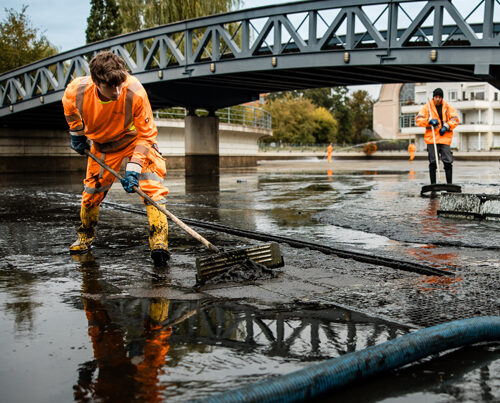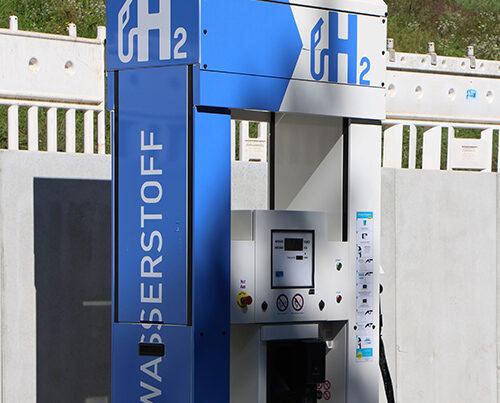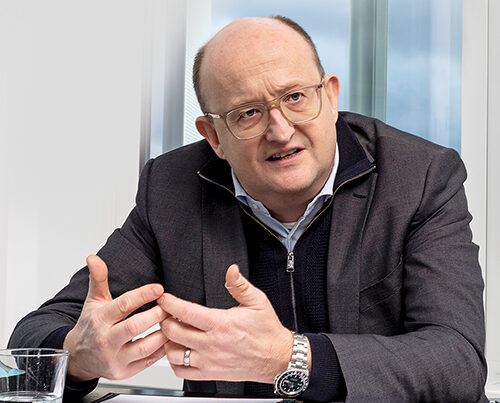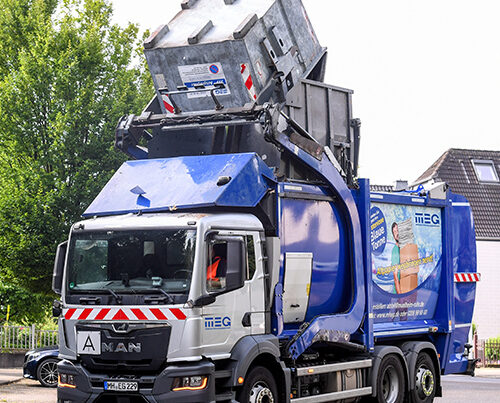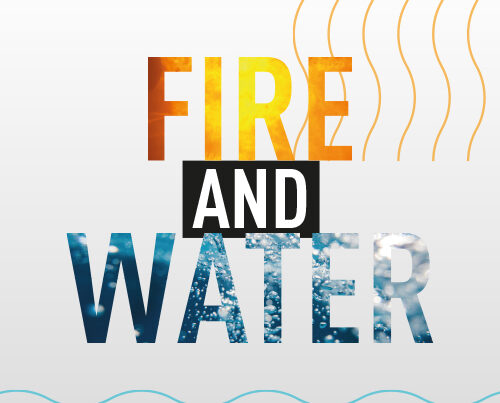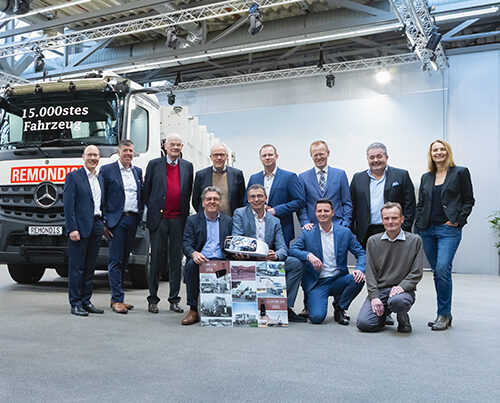When the orange road sweeper sets out early in the morning on its rounds around the cobbled streets of the historic quarter of the Swiss city of Basel on the River Rhine, it is not only polishing its image for the tourists but also measuring how clean the roads are. The amount of debris along the vehicle’s route is recorded by a sensor before being removed by the brushes and deposited in the road sweeper’s storage hopper.
Using artificial intelligence (AI) and dedicated software developed by the IT firm Cortexia, the amount and type of wastes are recorded while the cleaning work is being carried out. As a result, the application is able to objectively assess the levels of cleanliness; by using time series, data can also be collected that makes it possible to take a look into the future.
Thanks to AI, the planners at Basel’s street cleaning department get a reliable assessment of the type and volumes of waste that will be generated at particular times or on particular days. Rather than having to rely on the gut instinct of their staff and the (too) critical observations of local residents, it is now robust figures that determine when and how often the roads are cleaned.
For local authorities, therefore, digitisation in the waste management sector also means a cleaner city at lower cost. Another key benefit: it enables councils to further improve their climate footprint. Which means the ‘smart city’ is spearheading climate action.
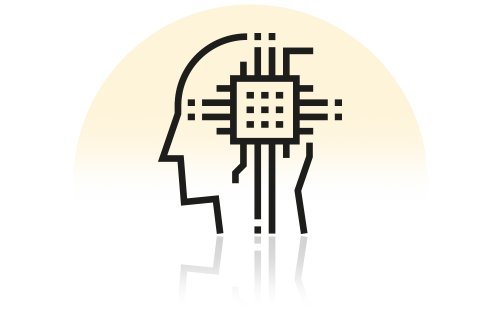
Using artificial intelligence and dedicated software developed by the IT firm Cortexia, the amount and type of wastes are recorded while the cleaning work is being carried out.
Digitisation & waste management
While sectors such as commerce and logistics used digitisation a few years back to effectively reinvent themselves, the waste management sector has been using networking and big data to integrate established processes and then to improve them with data management. It is not new supply chains that are changing the industry, therefore, but new concepts for delivering the services that should win over public and private sector clients and promote competition.
Thanks to the progress made in data standardisation, fields that belong together can finally be united. This is particularly true for transport logistics and route planning: integrated data management simplifies processes, makes it easier to plan staff schedules and grows efficiency.
Other areas of waste management, though, also benefit from digitisation, such as keeping cities clean. Bernd Bienzeisler from the Fraunhofer Research and Innovation Center for Cognitive Service Systems describes prediction-based services as a key innovation.
The advantage of such systems over previous processes is obvious: reactive city cleaning services have always meant going out after the employees or local residents have noticed that an area is particularly dirty. As far as everyone is concerned, this point is always too late. A proactive approach – i.e. cleaning everywhere very often so that nowhere can get really dirty – was simply not an option for many city authorities because of the high costs involved.
Things are different nowadays: digitisation has made it possible to plan cleaning measures and the deployment of resources and personnel effectively. Over the last few years, this has been used in the field in many different ways. Other approaches are still in their infancy. One activity that is of key importance here is gathering data.
“Thanks to AI-based solutions, all public spaces can be recorded and an objective picture of their levels of cleanliness drawn up. This, in turn, makes it possible to unequivocally document any progress made in keeping these areas clean.”
Dr Felix Thiele, Managing Director of REMONDIS Digital Services
Clean street apps
Smartphone apps such as “Düsseldorf bleibt sauber” [Keeping Düsseldorf clean] and “Stadtreinigung Hamburg” [Hamburg street cleaning] make it possible for local residents to report waste issues. Looking at the reviews on Google Play Store and Apple, it is clear what the locals use this app for. Be it a shopping trolley in the Düssel River, bulky waste left on the street or construction waste dumped next to a bottle bank. Whenever local residents get frustrated about street cleaning issues, they can pass on their complaint – with a photo of the problem and the GPS coordinates of the offending spot – without having to wait in line.
Such solutions offer a number of advantages that include their high levels of efficiency and their high levels of standardisation with all data being automatically recorded. A lengthy telephone call is no longer needed to document the problem – a laborious task that may also require the department to handle the callers with great sensitivity as their expectations of the local authority are often too high. Several call centre employees would have been needed to cope with the approx. 1,500 messages that were sent to Düsseldorf Council every month via the app in 2020. What’s more, ideally, the technology allows the data to be automatically processed, prioritised and passed on electronically to AWISTA. This public private company is responsible for keeping the city clean. Another plus point for the users is certainly the fact that these apps can be used 24/7.

Smartphone apps such as “Düsseldorf bleibt sauber” and “Stadtreinigung Hamburg” make it possible for local residents to report waste issues.
Datafleet
REMONDIS Digital Services has taken a different quality control route with its Datafleet. The refuse collection vehicles operated by Wirtschaftsbetriebe Oberhausen (WBO), for example, are using this scheme which effectively turns their vehicles into travelling eyes. The vehicles’ cameras and dedicated software identify traffic signs that are dirty, damaged or hidden by vegetation, faded road markings and even potholes while the collection trucks are travelling along their regular routes. They are also able to spot illegally dumped waste. The findings are automatically processed and then passed on electronically to the client so they can arrange for the repair work to be carried out or for the waste to be picked up.
Similar to Cortexia’s system, the big advantage of this application is the completeness of the data reporting. Dr Felix Thiele, managing director of REMONDIS Digital Services, stressed: “Thanks to AI-based solutions, all public spaces can be recorded and an objective picture of their levels of cleanliness drawn up. This, in turn, makes it possible to unequivocally document any progress made in keeping these areas clean.” This specialist is certain of one thing: our cities are cleaner than the impression given in public discussions. Each local resident, however, has different expectations of cleanliness and, in most cases, it is the critical voices that are the loudest.

Thanks to Datafleet, collection vehicles are turned into travelling eyes: the integrated cameras can, for example, identify illegally dumped waste and potholes.
According to Bernd Bienzeisler, examples from other European countries show that much more is possible when it comes to recording data about public spaces – such as using mobile phone data from passers-by or measuring how often bins are used. Germany’s data protection laws are very strict here, however, and these must be taken into account when developing applications.
Needs-based route planning makes sense if it can grow efficiency and positively impact on a city’s climate footprint.
Dr Felix Thiele, Managing Director of REMONDIS Digital Services
Fill level sensors & effective route planning
Overflowing bins are certainly one of the biggest problems when it comes to keeping cities clean. Experience has shown that people are more likely to drop litter or discard their rubbish if an area is already dirty. “It already looks so bad, so my rubbish won’t make any difference,” some people would appear to think as they add their old television to the discarded bottles next to the bottle bank.
There are other software solutions besides Cortexia and Datafleet that can help detect such problems and ensure bins are emptied. Just one example: fill level sensors. The information passed on by the sensors – via applications such as REMONDIS’ Binity – are used by the scheduling departments to plan the bin collection routes. Instead of travelling the same schedule every week, the routes are planned according to need: on the one hand, this prevents unnecessary journeys and, on the other, allows the vehicles to get to the hotspots at short notice.
Thiele pointed out the other benefits of such solutions: “Needs-based route planning makes sense if it can grow efficiency and positively impact on a city’s climate footprint. Kerbside collections of household waste in towns, for example, will continue to use fixed routes simply because of the costs involved. It makes little sense to install a fill level sensor in a household’s 120-litre wheelie bin.” The main argument here is that, with the buildings being so close to one another, there is a large number of bins next to each other and it would, for the most part, cost more to send the trucks out to collect individual bins than empty bins that are half full.

Collections rather than collection points
Cities often use central collection points for recyclables – such as local recycling points or recycling banks – and these play an important role. Digitisation is setting the course for their future use as well.
Such recycling points, however, often turn into hotspots being both noisy and a place where people tend to illegally dump their waste. Which is why some councils, such as the Frankfurt am Main city authorities, would like to reduce the number of their recycling banks. The problem here is that they must find a suitable alternative – and one that reflects the current political environment where statutory collection rates are being increased.
This is where textiltiger.de [textile tiger] comes into play: the number of clothes banks across the country has dropped significantly over the last few years. The private sector companies offering this service have found themselves facing considerable problems regarding the quality of the materials discarded by the public. Sometimes they find a whole selection of materials in their clothes banks – just no recyclable textiles. On the other hand, the kerbside collection of old clothes still makes sense to ensure they are recycled and to prevent them from being thrown away into the residual waste bin.
Textiltiger has been carrying out a pilot project in Hamburg for a good six months now that enables old clothes to be picked up from people’s homes free of charge. Households can order this service digitally. Employees from a cargo bike service then travel to the address to pick up the clothes. An electric van is used if large volumes of textiles need to be collected. The offering has deliberately been set up as a decentralised and low-emission service.
Initial findings have revealed that there is great interest among Hamburg’s residents for such a service – and the quality of the materials is much better than those put in the clothes banks. Most of the feedback from the several thousand people who have used the service to date has been positive. The recyclehero.de platform operates a similar service for glass and old paper in Hamburg as well although this does involve a fee.
Digitisation means flexibility
Household waste recycling centres (HWRCs) also play an important role as a place to hand in a whole host of materials – from garden waste all the way through to old paint. A survey carried out on behalf of REMONDIS Digital Services in January 2022, however, showed that some users were dissatisfied with the limited opening hours and the lack of payment options. Statistics show that most people would like to go to an HWRC in the late afternoon on a weekday or on Saturday – an option that very few centres are able to offer because of the amount of personnel needed.
One way to increase potential recycling rates here could be by introducing a self-service scheme with a small service charge that can be paid by card or mobile phone when the customer enters a separate dedicated area for handing in materials. The pilot projects that have been launched in Germany, including the one in Coesfeld, may not have achieved the standards in Denmark yet where the HWRCs can be used 24/7. These projects are, however, offering a service in some towns in Germany that allows people to access recycling centres outside normal business hours using an app.
As residents have to sign up to use the app and enter precise information about the waste they are handing in, it is possible to clearly identify who left what material. Self-service does not automatically lead to reduced control and littering. Such concepts could en-able recycling centres to be situated closer to residents as smaller satellite collection points could be set up and operated.
All these projects clearly show that digitisation is an important component for the waste management sector to achieve its climate targets. It makes the organisation of collections more efficient, which means fewer carbon emissions. At the same time, recycling rates are increased – giving the circular economy an additional boost.
Image credits: images 1, 2, 3: Adobe Stock: martanfoto







